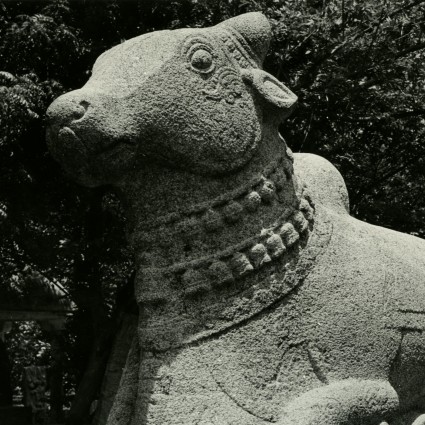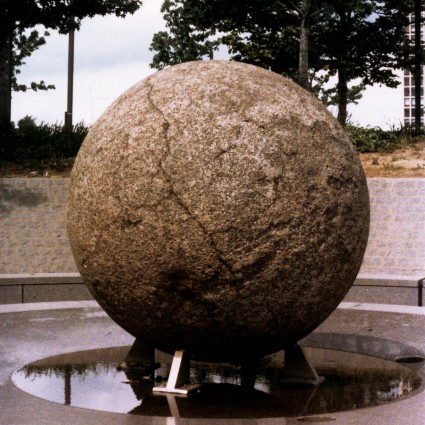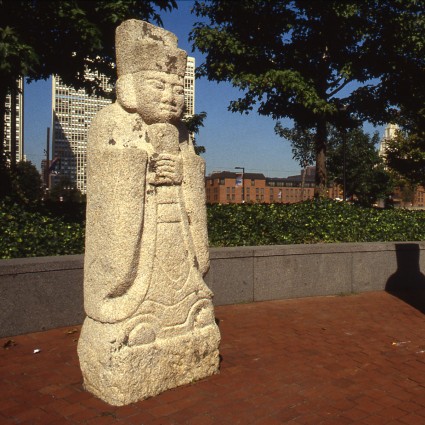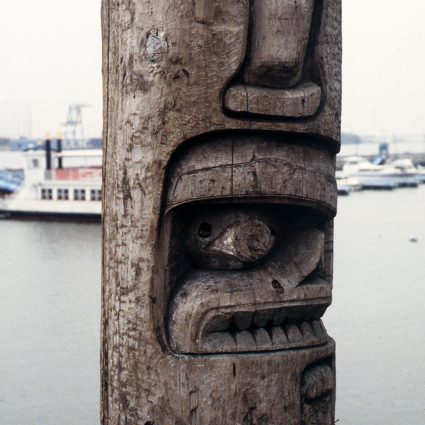At A Glance
Five Water Spouts and Lintel was among the sculptures included in an International Sculpture Garden at Penn’s Landing
Many Hindu and Buddhist temple sites in eastern Java, Indonesia had pools for ritual bathing where water flowed through carved spouts
The Fairmount Park Art Association (now the Association for Public Art) acquired five spouts that resemble a tiger, a ram, an elephant and two makaras (mythical creatures)
Five Water Spouts and Lintel was among several sculptures included in an International Sculpture Garden at Penn’s Landing, along the Delaware River between Walnut and Spruce Streets. Though the sculptures have been placed in storage in anticipation of the potential relocation of the International Sculpture Garden, Five Water Spouts and Lintel remains on site.
The overhead lintel shows a kala, which was thought to be both a ferocious and a protective force: a visitor who passed through a kala gateway was symbolically devoured and reborn.
As long ago as the eighth century, temples expressing Hindu and Buddhist religious beliefs appeared on the Indonesian islands of Java and Sumatra. Many of the temple sites in eastern Java had pools for ritual bathing where the water flowed through carved stone spouts. In 1979 the Fairmount Park Art Association (now the Association for Public Art) acquired five of these spouts as well as a frog figure and a lintel, and the Mabel Pew Myrin Trust supported their installation at the Sculpture Garden. Three of the spouts resemble a tiger, a ram, and an elephant. Two are makaras, mythical creatures that appear in Indian and Indonesian art. The overhead lintel shows a kala, which was thought to be both a ferocious and a protective force: a visitor who passed through a kala gateway was symbolically devoured and reborn.
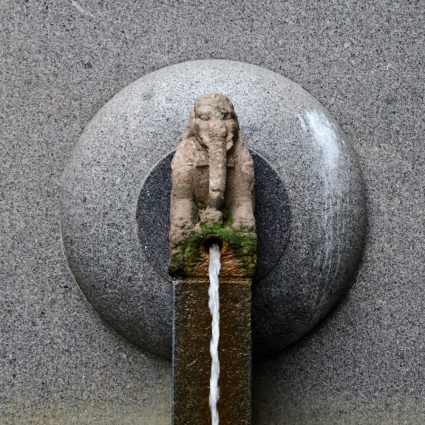
The International Sculpture Garden
The International Sculpture Garden was conceived by the Fairmount Park Art Association (now the Association for Public Art) in the 1960s as part of the anticipated U.S. Bicentennial celebration. The open-air installation celebrates and demonstrates the impact of other cultures on the American experience with a focus on ancient and ethnographic artworks. “Each individual piece,” the Association noted, “should not only be typical of that nation’s heritage, but should also be of the highest quality.” The sculpture collection includes a group of significant objects from diverse cultures. The Art Association acquired and installed the garden’s sculpture collection over several years.
Since its 1976 dedication, the garden’s site has undergone many changes. In 1992, Venturi Scott Brown and Associates’ Columbus Monument, a 106-foot-high obelisk, was erected at the north end, and a hotel now also occupies a portion of that section. Conditions surrounding the garden have changed dramatically in recent years, leading to a reconsideration of the existing garden site. In anticipation of the potential relocation of the International Sculpture Garden, most of the sculptures have been removed for conservation treatment and placed in storage.
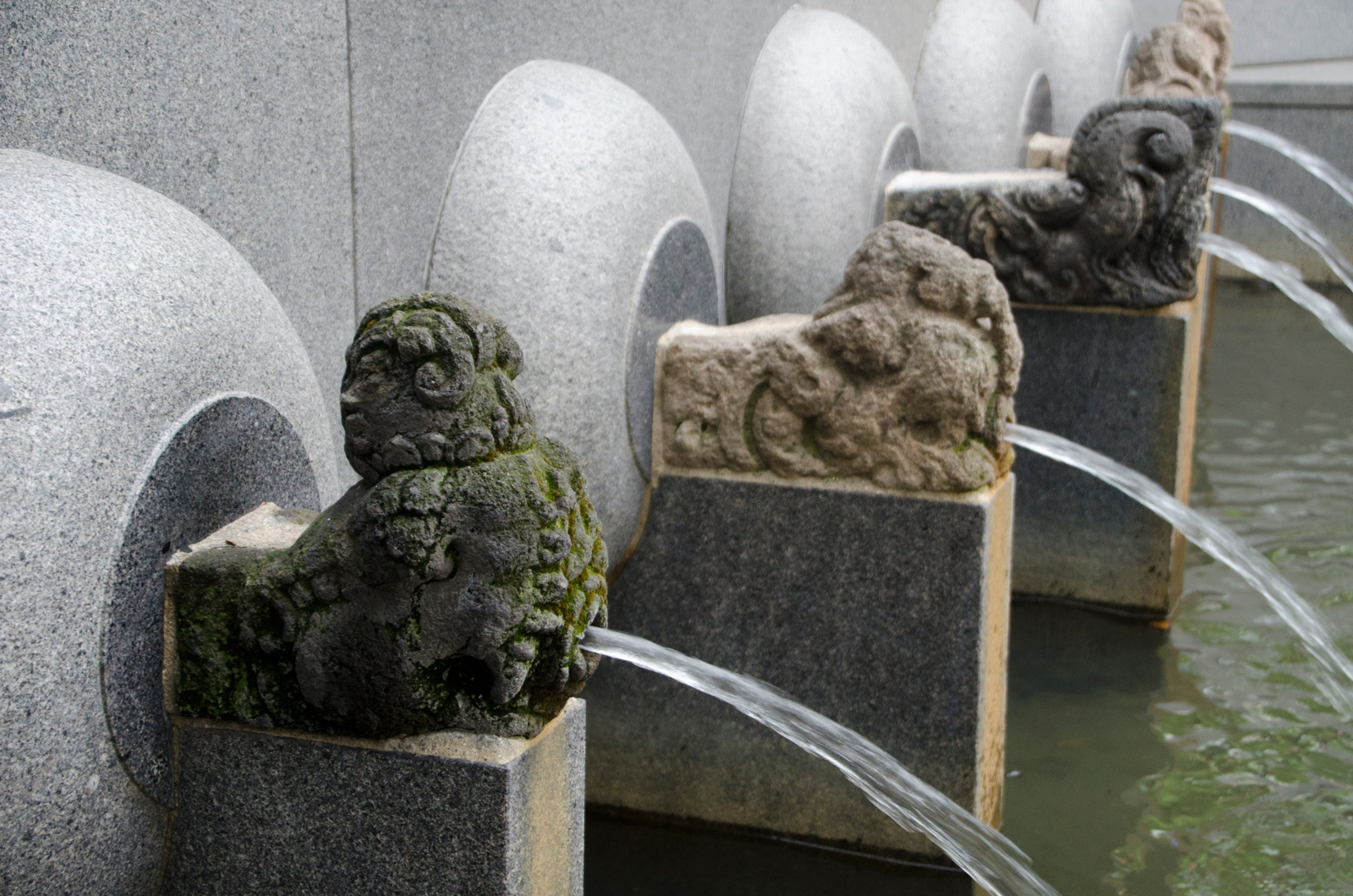
RESOURCES:
